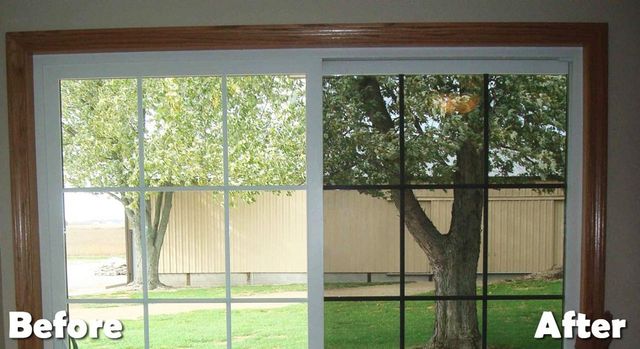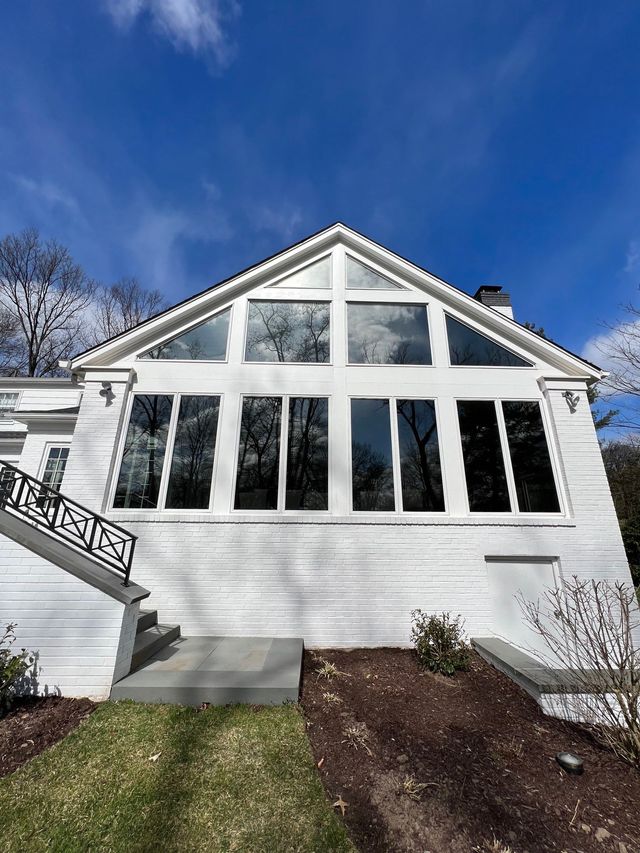Residential Window Tint: The Eco-Friendly Option for Your Home
Residential Window Tint: The Eco-Friendly Option for Your Home
Blog Article
Exactly How Residential Home Window Tinting Improves Your Home's Power Effectiveness
Residential home window tinting offers a compelling option for home owners seeking to enhance power efficiency within their home. By using specialized films to home windows, it successfully minimizes heat transfer, thus supporting interior temperatures and decreasing the requirement for excessive heating or air conditioning. This not only reduces power consumption but additionally provides an extra comfortable environment by reducing glare. However, understanding the nuances of how tinting jobs and selecting the appropriate type for your home can be crucial. Strangely enough, what factors should one consider before making this investment?
Recognizing Home Window Tinting
Recognizing home window tinting is essential for house owners seeking to enhance both comfort and energy performance in their home. Residential Window Tint. Window tinting includes the application of a thin movie to the inside or outside surface area of glass windows. This movie can dramatically regulate the quantity of sunlight and warm that goes into a home, hence influencing interior environment problems
There are various types of window tinting films available, each with distinctive buildings. The efficiency of home window tinting is frequently measured by its Visible Light Transmission (VLT) portion, which suggests just how much light can pass through the movie.
Advantages of Power Effectiveness
Home window tinting not just improves appearances however also plays a considerable duty in improving power efficiency within property areas. By minimizing warm transfer via windows, colored movies develop a more steady interior environment, which can cause considerable decreases in energy consumption for heating & cooling. This energy performance converts right into lower energy bills, giving homeowners with considerable long-lasting financial savings.

Furthermore, home window tinting enhances the convenience of living rooms. By reducing glow and obstructing dangerous UV rays, colored windows develop an even more pleasurable setting, which can lead to improved health for occupants. The protection against UV rays likewise assists preserve furnishings and floor covering from fading, adding to the durability of house things.
Just How Tinting Works
Tinting films operate with a mix of innovative products and modern technologies created to regulate the quantity of solar power entering a home. Largely composed of polyester, these films commonly include metallic or ceramic bits that soak up and mirror warmth. This twin capability enables them to substantially lower the infiltration of ultraviolet (UV) rays and infrared radiation while allowing noticeable light to travel through.
The performance of window tinting is measured by its solar heat gain coefficient (SHGC), which shows just how much solar power is sent through the window. Lower SHGC values are more effective as they represent better warm being rejected. Furthermore, window colors can include a range of tones, permitting property owners to personalize their visual choices while boosting power effectiveness.
Furthermore, these films work as an obstacle, stopping warm loss throughout cooler months by reflecting interior warmth back right into the space. This thermal insulation effect matches the cooling benefits obtained during warmer months, contributing to a well balanced interior climate year-round. By taking care of solar power successfully, domestic window tinting not only enhances convenience yet likewise plays an important duty in minimizing power intake and decreasing utility costs.
Selecting the Right Color

There are numerous this sorts of window movies offered, consisting of dyed, metalized, and ceramic. Dyed films are economical but may have limited longevity. Metalized films use much better heat rejection yet can disrupt electronic signals. Ceramic films give excellent heat control without jeopardizing visibility and are highly sturdy, making them a preferred option.
Noticeable light transmission (VLT) is an additional essential variable, as it suggests the amount of all-natural light that can pass through the colored glass. Home owners must choose a color with a VLT that complements their lighting preferences while still offering ample glow reduction.
In addition, analyzing the solar warmth gain coefficient (SHGC) can assist figure out exactly how well a tint can block warmth from sunlight. A lower SHGC indicates much better warmth control, ultimately boosting energy performance.
Installment and Upkeep Tips
Proper installment and maintenance are vital parts in maximizing the advantages of domestic home window tinting. Experts likewise use specialized devices and methods, which can improve the sturdiness and effectiveness of the color.
Complying with setup, maintenance is vital to lengthen the life of the window film. It is recommended to wait at the very least 30 days before cleaning up the colored home windows to enable the adhesive to cure fully.
Furthermore, regular examinations are helpful. Inspect for any type of peeling or bubbling, which might suggest improper installation or put on gradually - Residential Window Tint. Addressing these concerns quickly can protect against more damage and maintain energy effectiveness. By adhering to these setup and upkeep suggestions, homeowners can ensure their home window tinting proceeds to give significant power savings and comfort for several years to come.
Final Thought
To conclude, domestic home window tinting works as an effective remedy for boosting energy effectiveness within homes. By reducing warm transfer and blocking harmful UV rays, window films add to decrease power usage and enhanced indoor convenience. The selection of ideal tinting materials, in addition to appropriate installation and maintenance, even more makes the most of these check this benefits. Eventually, home window tinting stands for a sustainable financial investment that not only decreases energy bills however additionally promotes a comfy living environment throughout the year.
Home window tinting includes the application of have a peek at this site a slim film to the interior or exterior surface of glass home windows. By minimizing heat transfer through windows, colored movies create a more steady indoor climate, which can lead to substantial reductions in energy consumption for heating and cooling.The efficiency of home window tinting is measured by its solar warm gain coefficient (SHGC), which indicates just how much solar energy is transmitted through the window. By taking care of solar energy successfully, household window tinting not only boosts convenience but also plays an essential duty in reducing energy consumption and lowering utility expenses.
By lowering heat transfer and obstructing dangerous UV rays, home window movies contribute to lower energy consumption and enhanced interior comfort.
Report this page